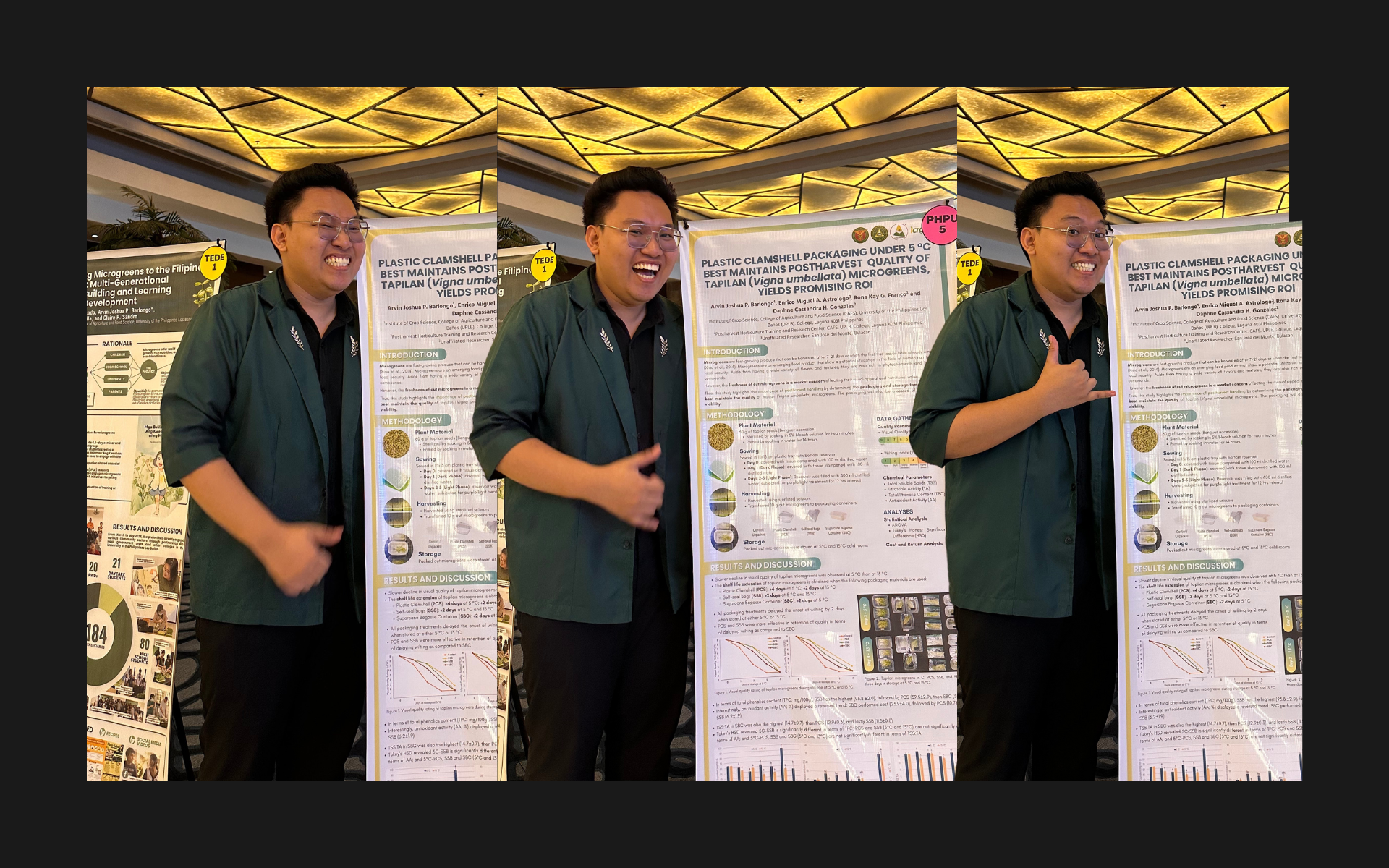Plastic Clamshell Packaging Under 5°C Best Maintains Postharvest Quality of Tapilan (Vigna umbellata) Microgreens, Yield Promising ROI
Poster Presentation. CSSP-SABRAO 2024 International Conference for Crop Science and Breeding. Crimson Hotel Filinvest Alabang, Muntinlupa City, Philippines. August 12-16, 2024.

Abstract
Freshness of cut microgreens is a market concern affecting their visual appeal and nutritional value. This study highlights the importance of postharvest handling by determining the best packaging among plastic clamshell (PCS), self-seal bags (SSB), and sugarcane bagasse containers (SBC); and storage temperatures (5ºC or 13ºC) to maintain the quality of tapilan (Vigna umbellata) microgreens, best for food utilization. A business viability assessment was also performed to identify the most economically viable packaging for prospective entrepreneurs. Tapilan microgreens stored at 5ºC maintained excellent quality across all packaging until day 3, compared to the control which were already unmarketable. Furthermore, a 0% degree of wilting was observed on day 3 in both PCS and SSB. Physico-chemical analysis at day 3 revealed that tapilan microgreens stored at 5℃ minimized the decline of total phenolic content (TPC), antioxidant activity (AA), and total soluble solids to titratable acidity ratio (TSS:TA) compared to those at 13℃. TPC was highest in SSB (93.78±2.01 mg GAE/100g), followed by PCS (59.52±2.93 mg GAE/100g), and then SBC (53.89±4.49 mg GAE/100g). Interestingly, AA displayed a reversed trend with SBC performing best (23.9±3.99%), followed by PCS (10.73±1.24%), and SSB (6.24±1.9%). In terms of TSS:TA, a similar trend was observed with SBC performing best (14.67±0.73), followed by PCS (12.83±0.33), and SSB (11.50±0.76). Tapilan microgreens in PCS also maintained a marketability threshold until day 5 under for both temperatures. The business viability assessment revealed that SBC projected the lowest ROI at 15.69%, while SSB yielded highest at 55.11%. However, the opportunity cost of SSB is lower AA, TSS:TA, and VQR. Thus, PCS was identified as the best option middling with a projected monthly net profit-cost ratio of 298.06 and 47.57% ROI, for a small-scale tapilan venture, considering 240 produced units are sold at a good postharvest quality.
Keywords: microgreens, tapilan, physicochemical properties, postharvest quality, return on investment, cost and return analysis
Post a comment